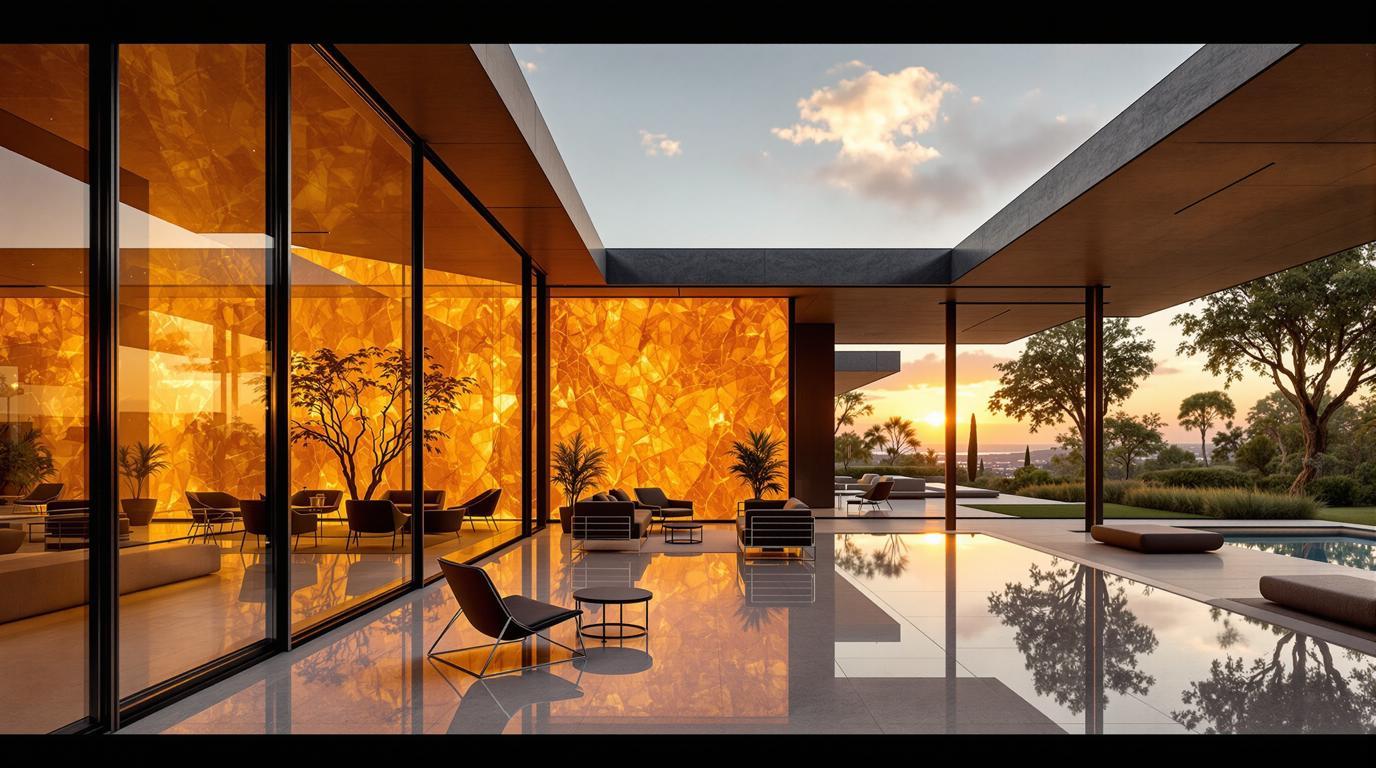A masterpiece seemingly forgotten in time sits perched on a hillside in Brno, Czech Republic. The Tugendhat Villa is not just a building—it’s a revolutionary statement that forever changed how we think about modern living. This UNESCO World Heritage site might be the most influential private residence of the 20th century that you’ve never heard of.
A glass palace that broke all the rules
Completed in 1930, the Tugendhat Villa represents German architect Ludwig Mies van der Rohe’s genius at its purest. Unlike anything before it, the villa eliminated interior walls using a revolutionary steel framework that created flowing, open spaces filled with light—a radical concept that would later define modern architecture worldwide.
The villa’s most breathtaking feature is its immense floor-to-ceiling windows that mechanically retract completely into the floor—technology that was absurdly advanced for its time. When lowered, the entire living space merges seamlessly with the garden terrace overlooking Brno’s skyline.
The onyx wall that changes color with the setting sun
At the heart of the main living space stands a spectacular honey-colored onyx wall imported from Morocco’s Atlas Mountains. As sunlight filters through its semi-translucent surface each evening, the entire room transforms in a golden glow that early visitors described as “magical.”
“The wall doesn’t just divide space—it transforms light into an architectural element itself. When the sun hits it just right, it seems to glow from within,” explains Jana Černá, a Tugendhat Villa guide.
From modernist marvel to Nazi headquarters
The Tugendhat family, wealthy Jewish industrialists, enjoyed their architectural masterpiece for barely eight years before fleeing Nazi occupation in 1938. The villa was then commandeered by the Gestapo, who appreciated its strategic hillside position. Later, Soviet forces used it as stables, with horses tethered to custom-designed furniture that now sells for hundreds of thousands at auction.
Like other hidden European treasures, the villa’s dramatic history adds layers of meaning to its architectural significance. Its story parallels much of Central Europe’s turbulent 20th century journey.
Where furniture became sculpture
The villa’s iconic furniture pieces, including the famous “Brno” and “Tugendhat” chairs, weren’t mere furnishings but integral components of the architect’s vision. These minimalist masterpieces, still produced today, were some of the first examples of furniture as sculptural art.
Equally striking is what’s missing—decorative elements. Unlike the ornate interiors common at the time, Mies’s philosophy of “less is more” created spaces where materials themselves—rare macassar ebony, travertine, and chrome—provided all the visual interest needed.
The technical marvel beneath the beauty
Hidden beneath the elegant simplicity is technological innovation that rivals what you’d find at Europe’s most impressive underground marvels. The villa featured air conditioning, photocell-operated doors, and an elaborate heating system—all controlled from a basement “engine room” that resembles a submarine’s interior.
“What’s remarkable isn’t just that they had these technologies in 1930, but that they were so seamlessly integrated you’d never know they existed,” notes architectural historian Martin Steinberg.
Visiting this modernist pilgrimage site
Today, following a meticulous $8.8 million restoration completed in 2012, visitors can experience the villa much as it appeared when new. However, securing tickets requires planning months in advance—tours frequently sell out 90 days ahead.
For travelers exploring Central Europe’s architectural heritage, the villa pairs wonderfully with authentic European villages that preserve different aspects of cultural history.
While stunning photographs exist, nothing compares to standing inside spaces where light, material, and proportion achieve perfect balance. Like Monument Valley’s towering sandstone formations or Australia’s remote outback towns, the Tugendhat Villa offers an experience that transcends ordinary architecture.
Standing in the main living room as afternoon light filters through the onyx wall, visitors often fall silent. In that moment, across nearly a century, Mies van der Rohe’s vision of modern living—elegant, technologically advanced, and intimately connected to nature—feels not just revolutionary but strangely like coming home.
